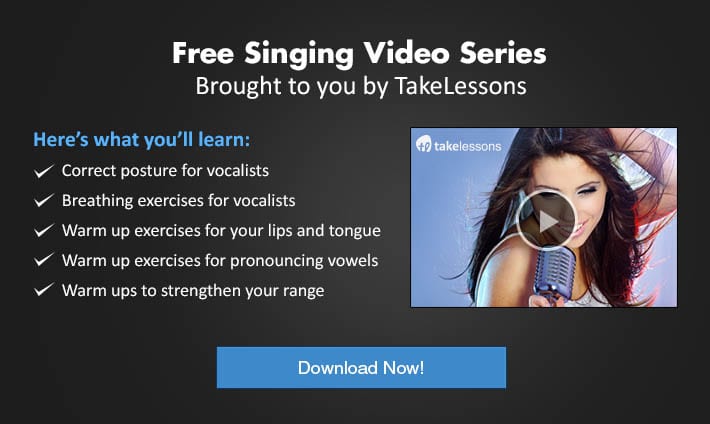 There are many reasons you may be interested in learning how to teach yourself to sing. Maybe lessons are too expensive, or you are not entirely sure singing is your passion. Maybe you’re embarrassed about your singing level or you feel like you are behind and want to kickstart your singing. But is it actually possible to teach yourself to sing? Yes… and no. Read on to see what we mean…
There are many reasons you may be interested in learning how to teach yourself to sing. Maybe lessons are too expensive, or you are not entirely sure singing is your passion. Maybe you’re embarrassed about your singing level or you feel like you are behind and want to kickstart your singing. But is it actually possible to teach yourself to sing? Yes… and no. Read on to see what we mean…
You Already Sing!
Singing is part of our everyday lives. It isn’t like learning something completely new, such as an instrument or learning how to drive, because singing is simply an extended use of the voice. You are already halfway to singing when you speak. So, you’ll want to work on the techniques of using your voice that will improve this skill you already possess. The techniques you will want to begin with include:
- Vocal Pitch
- Vocal Power
- Vocal Range
[tl-inline-offer category=”Singing”]
Vocal Pitch
Vocal pitch is one of the most important areas of singing. When you work with a vocal coach, your pitch may be one of the first things they talk about. Singing off-pitch is what causes most singers to stop singing, or listeners to think someone sounds bad.
When you are learning how to teach yourself to sing, you will want to establish a good warm-up and exercise routine to help with this technique. Pitch matching – reproducing tones you hear with your voice – is probably the simplest exercise you can work on. This involves not just working with your voice, but your ear as well, as your ear is an important key to vocal pitch. All you need for simple pitch-matching exercises is a tuner, a pitch to match, and your voice.
The pitch you match could be the built-in pitches in a tuner, a piano, or even a YouTube video or virtual keyboard. The best technique, however, is using a piano, because it trains your ear in the same way you would in professional lessons. Play a note, such as a C, and sing it back. This is where you will want a tuner to tell if you are truly matching pitch.
Vocal Power
The next step in the journey of how to teach yourself to sing is to work on your vocal power. To begin, vocal power requires proper breathing and diaphragm control. Add some breathing exercises to your daily warm-up, and pay attention to correct positioning of your jaw, mouth, and body to help with this.
A lot of breathing exercises incorporate singing different sounds on pitches and working up and down the scale. Making sure you breathe from your belly and support your voice through the entire exercise is the key to power. Sequences such as “Mi Me Ma Mo Mu” up and down the scale will give you practice in opening your mouth, relaxing your throat, and supporting your sound. You don’t want these notes to sound nasal, but rather supported and steady.
Vocal Range
Vocal range goes hand-in-hand with vocal power. Once you get your breath support under control, you can begin exploring your range. The ability to relax your throat and support your voice will give you the power needed for the wider range in notes.
There are several great range exercises to try as you’re working on scales. For an example exercise, check out the video below. These exercises should be part of your warm-up before working on an actual vocal piece.
Video: Recap of Pitch, Power, and Range
Learn how to sing on-pitch and with power, as well as improve your range, with these extra tips and vocal exercises by online teacher Liz T.:
Additional Resources
There are tons of great supplemental resources on how to teach yourself to sing, from the Internet to the library to your local music programs. You can practice any of the warm-up exercises you find on YouTube, as well as match pitch through standards and common folk songs. Often you can find sheet music online or in your local library or these sorts of songs.
While you can teach yourself to sing the basics with these resources, if you want to sing well, working with a vocal teacher is extremely important. Your teacher will be able to notice and correct bad habits that can lead to injuries or those that may be affecting your sound. Plus, the motivation and inspiration you can get from this type of guidance can make a huge difference.
Find a qualified teacher, and then use the exercises described above to supplement your learning in between your lessons. Before long, you’ll be singing like the pros!
Photo by Michael Chen
Suzy S.

